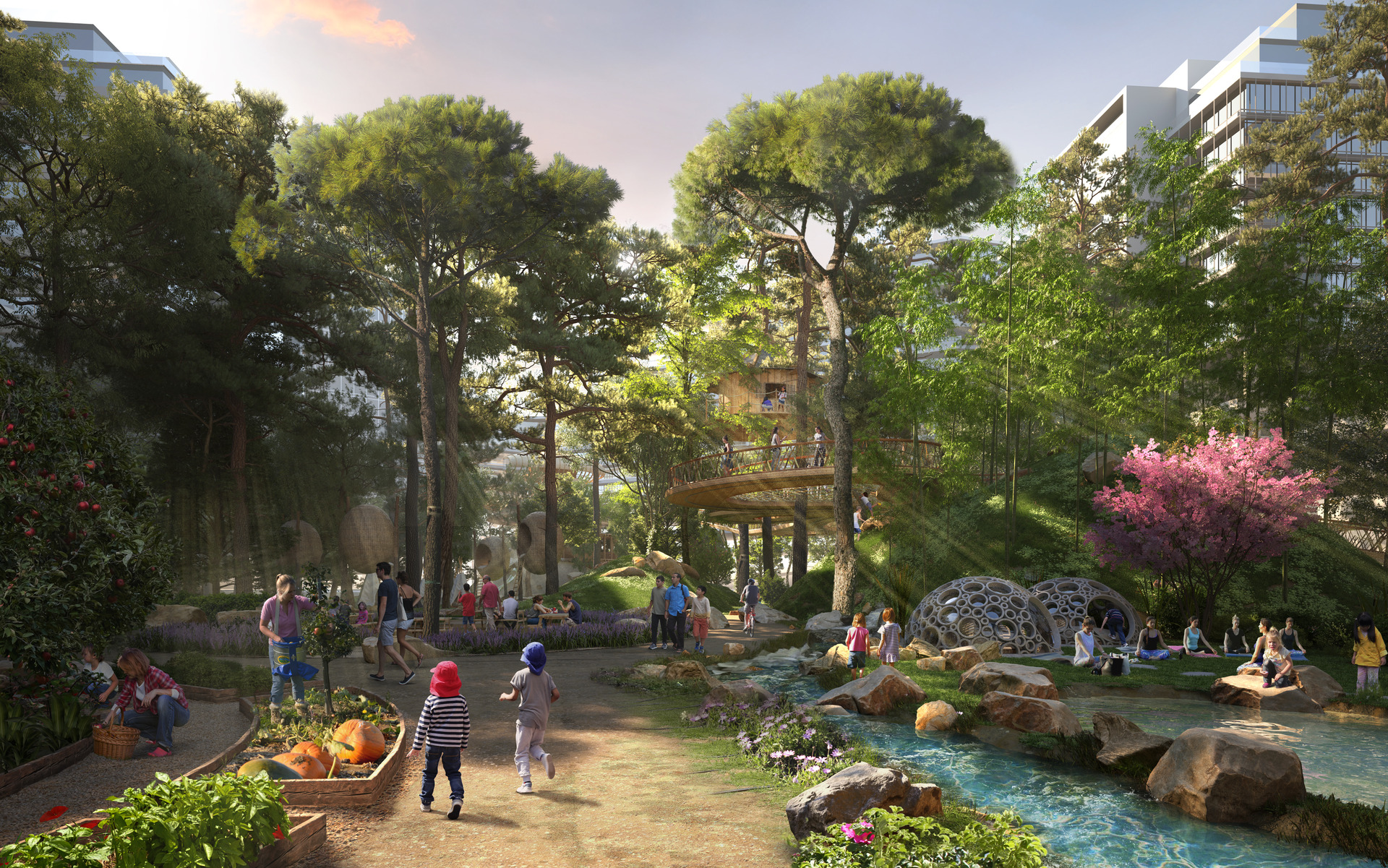Seven ways to merge wellness and landscapes
By Ashley Scott
July 29, 2022
Landscape design that integrates wellness and sustainability has the power to significantly enhance a hotel or resort guest’s experience, and the property’s bottom line.
When people feel connected to the land, the health of both improves, so we must weave their stories together from the start.
Landscaped spaces get people to move from inside to outside, and according to research published in the journal Nature, “spending at least 120 minutes a week in nature is associated with good health and wellbeing,” improving sleep, breathing, motivation, immune function, and overall emotional wellbeing. Such tangible results further bond the guest with nature – and with your property.
When people feel connected to the land, the health of both improves, so we must weave their stories together from the start. We can identify the environmental or ecological assets of the hotel or resort property, and design ways for them to become part of the holistic guest experience, creating education, awareness and understanding between the guest and nature. This approach also helps the property owner and operator shift beyond the status quo of sustainability and have an even bigger, regenerative impact on the ecosystem that surrounds them – especially as the guest starts to understand the role they play in this regeneration.
Consider these seven ways that landscape can become an integral part of a hotel or resort’s wellness program, and influence its environmental impact as well.
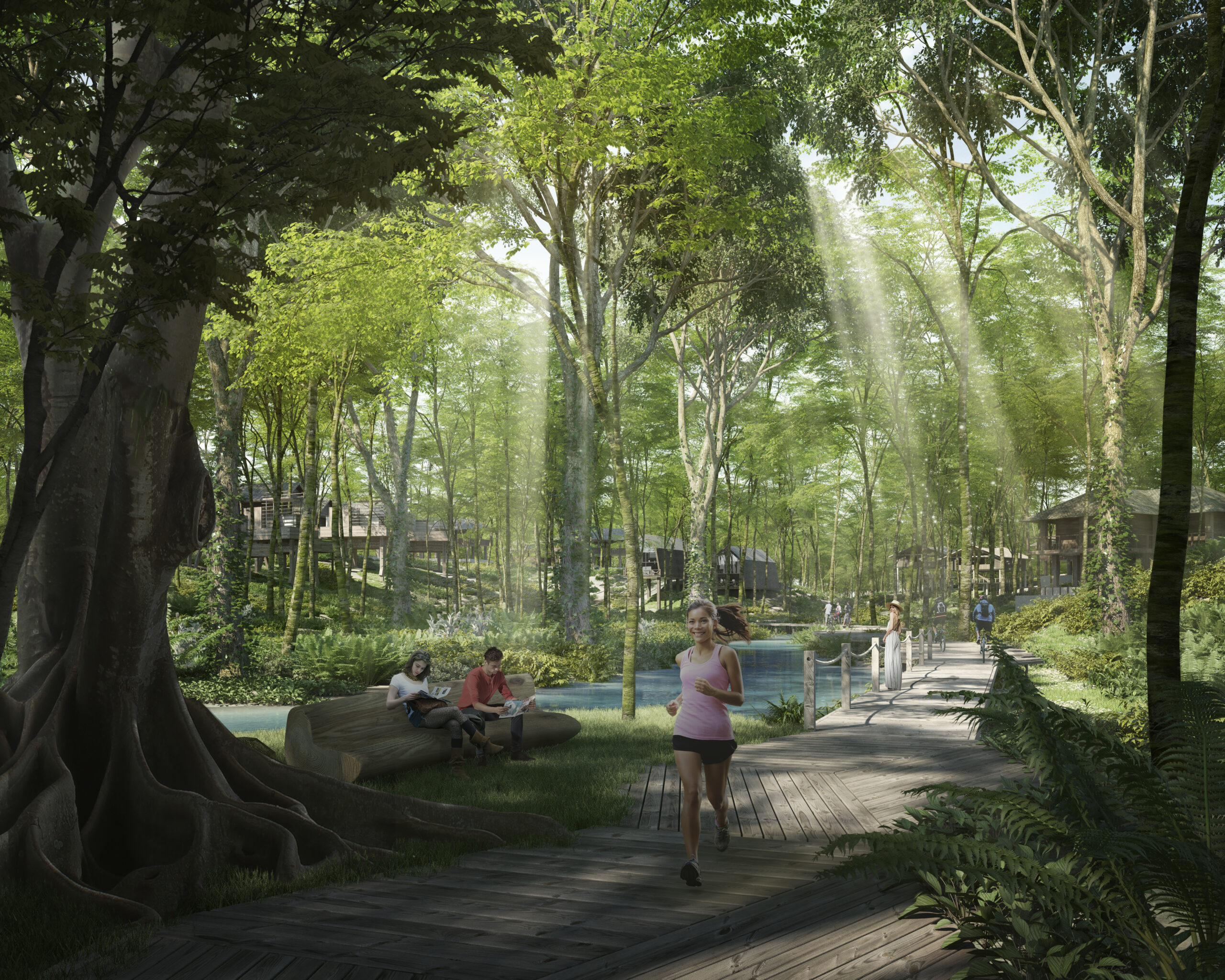
CasiCielo in Bocas del Toro, Panama
1. Outdoor Fitness
Fitness trails, yoga pavilions, meditation gardens, kids play areas and exercise lawns all encourage guests to move from the indoor gym to the outdoors. Consider gardens or green spaces that are adjacent to and directly accessed from the interior gym, offering space for steps or pushups, and extending the amenity and its usage. Outdoor fitness classes, presented in partnership with local experts, can become a source of revenue, too.
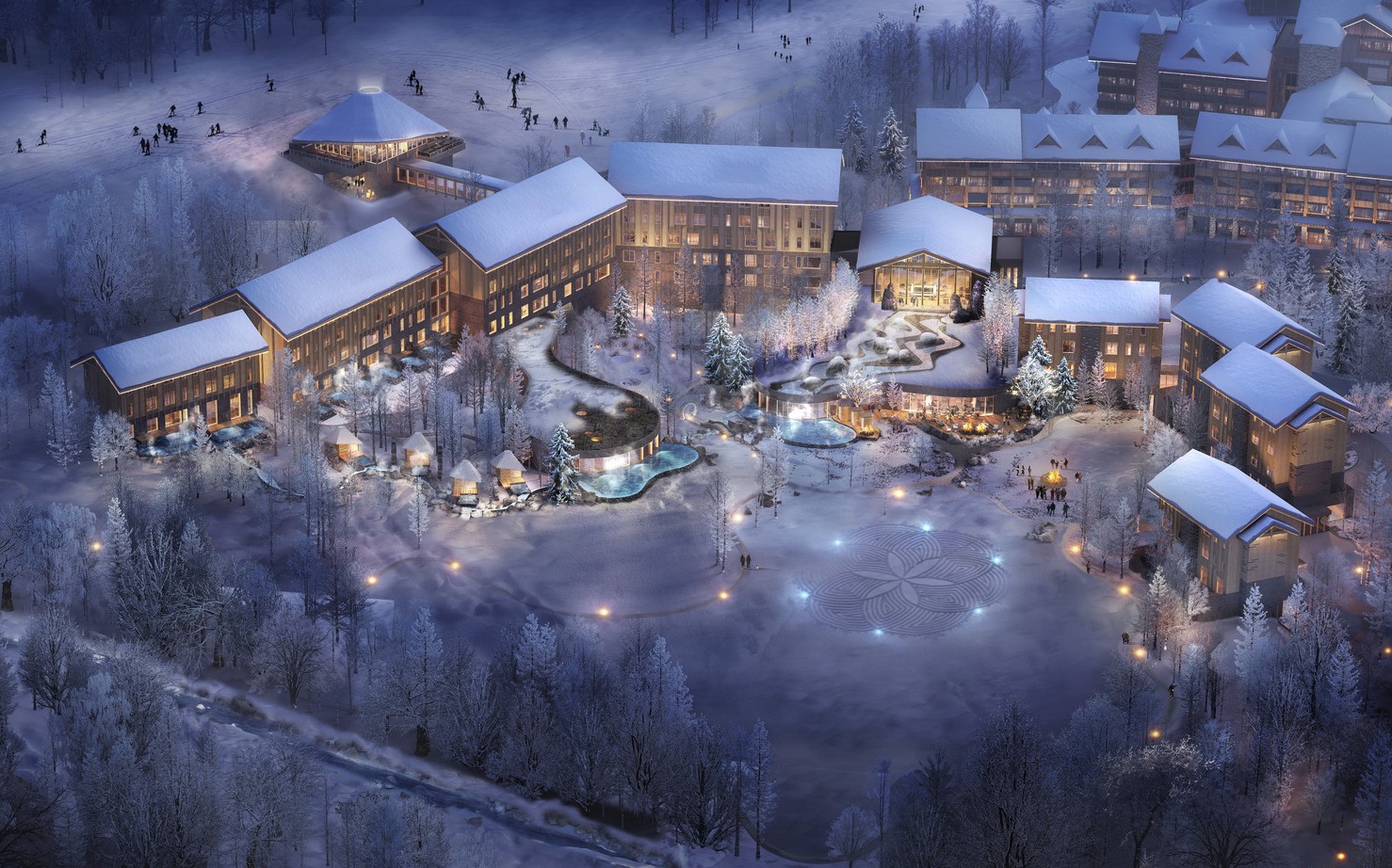
Confidential ski resort in the Arctic Circle
2. The Four Elements: Fire, Water, Air and Earth
The elements can be integrated to heighten the guest experience. Water and fire are often presented in tandem to illustrate nature’s balance. Kneipp walking – named for the 19th century priest Sebastian Kneipp who is known to have cured his own tuberculosis after several months of hydrotherapy – alternates between exposures to hot and cold water. We’ve recently considered this approach for a resort located in a region where snow and thermal springs are equally abundant, rejuvenating guests with the experience of both cold and hot sensations. Both inside and outside, water features can be used to soften ambient noise and create a sense of tranquility, while fire exemplifies nature’s power, and to nurture social connections reminiscent of campfire gatherings.
Bringing natural ventilation and fresh air into indoor-outdoor spaces can not only benefit guest and employee wellbeing, but also help to control energy costs. And the earth plays a role in reflexology. Consider the healthful effects of walks along nature trails, including opportunities for guests to walk, barefoot if they choose, along different textures of pebbles, sand, bark or grass.
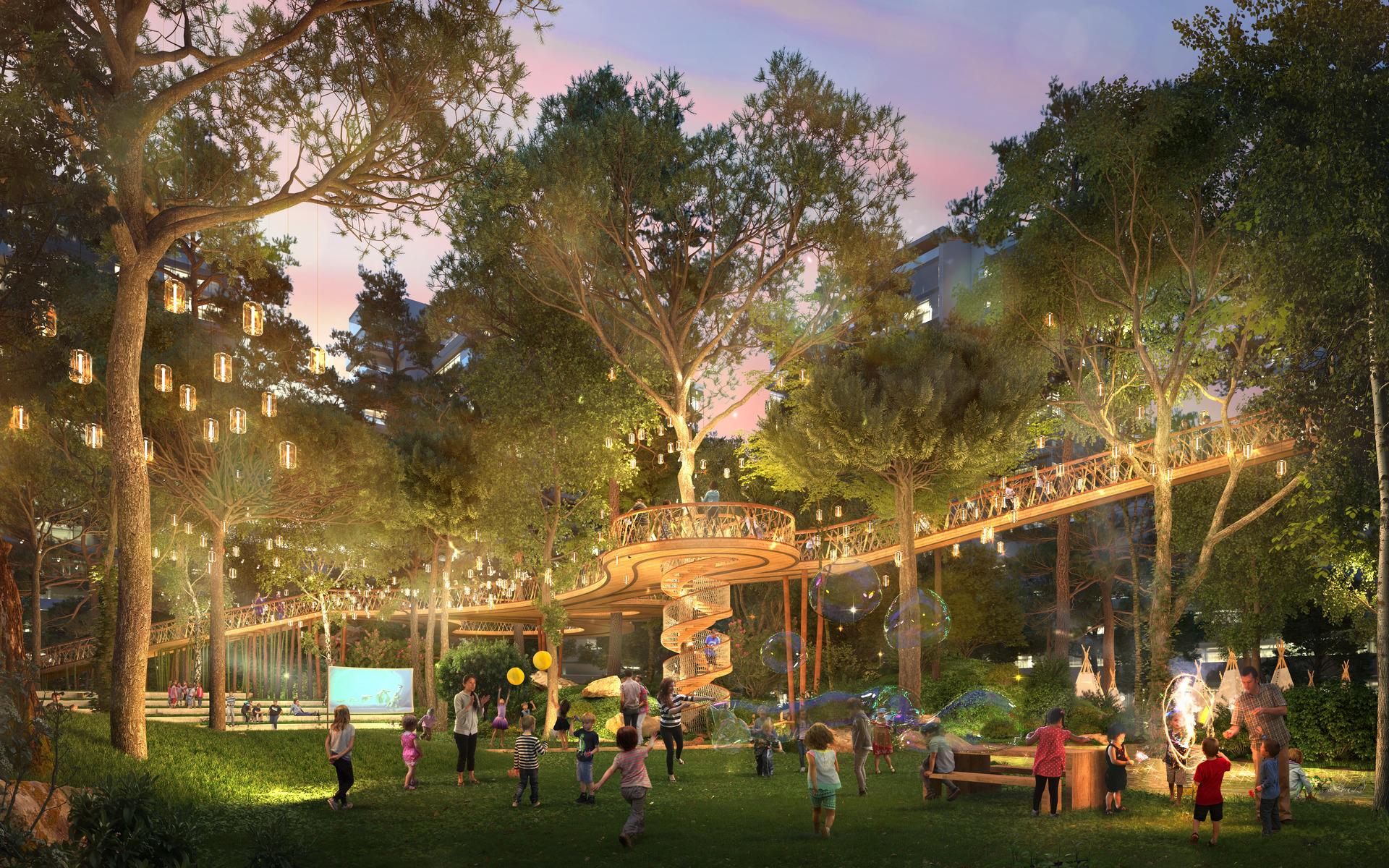
Confidential urban project in Turkey
3. Light
Trees can be selected not only to enhance shading and its cooling effect, but also to create the soothing effect of dappled light. The sun can become a natural centerpiece as well, with gardens or sculptural elements designed to frame views of sunsets or sunrises. Moon gardens, typically featuring fragrant white flowers or other night bloomers that reflect moonlight, offer guests activities after dark, again extending their use of hotel amenities.
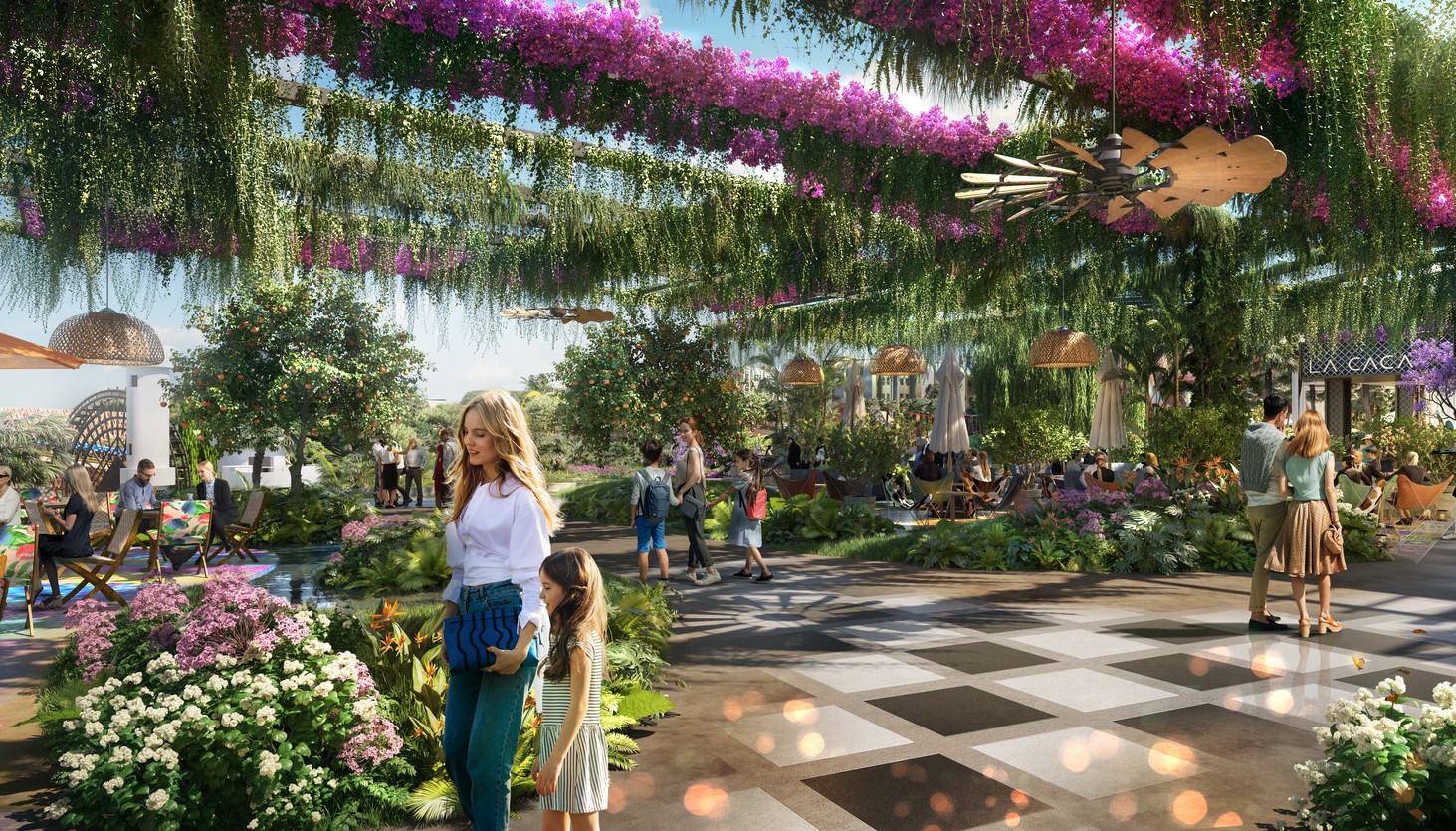
intu Costa del Sol in Torremolinos, Spain
4. Chromotherapy
Rooted in the ancient Chakra system, with colors corresponding to the body’s seven main chakras, color gardens with plants and flowers that showcase different colors through different seasons can enhance the guest’s journey through outdoor spaces. Red is considered grounding, for example, while yellow provides a boost to self-esteem, and indigo sparks imagination.
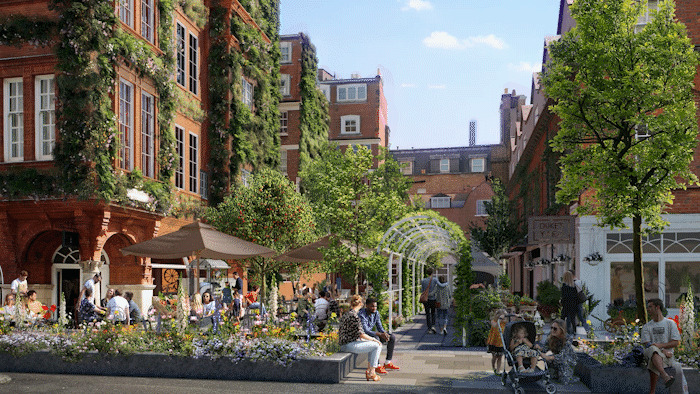
Green Block in London, UK
5. Aromatherapy
Scented plants, such as lilac or lily of the valley, and herbs, such as rosemary or lavender also promote wellness and can be planted along paths or trails to encourage meandering and enhance the guest journey. Consider incorporating educational components into the design too, encouraging guests to slow down and pause to read about the way different plants are used in wellness or cooking applications.
Color and aroma are often considered together, with regionally relevant plants and trees such as cherry or jacaranda trees that become natural attractions when they bloom. Using a wide variety of colorful and fragrant plants – outfitted with beehives and/or bug hotels – are also effective at attracting birds and pollinators, contributing to the property’s biodiversity and habitat regeneration.
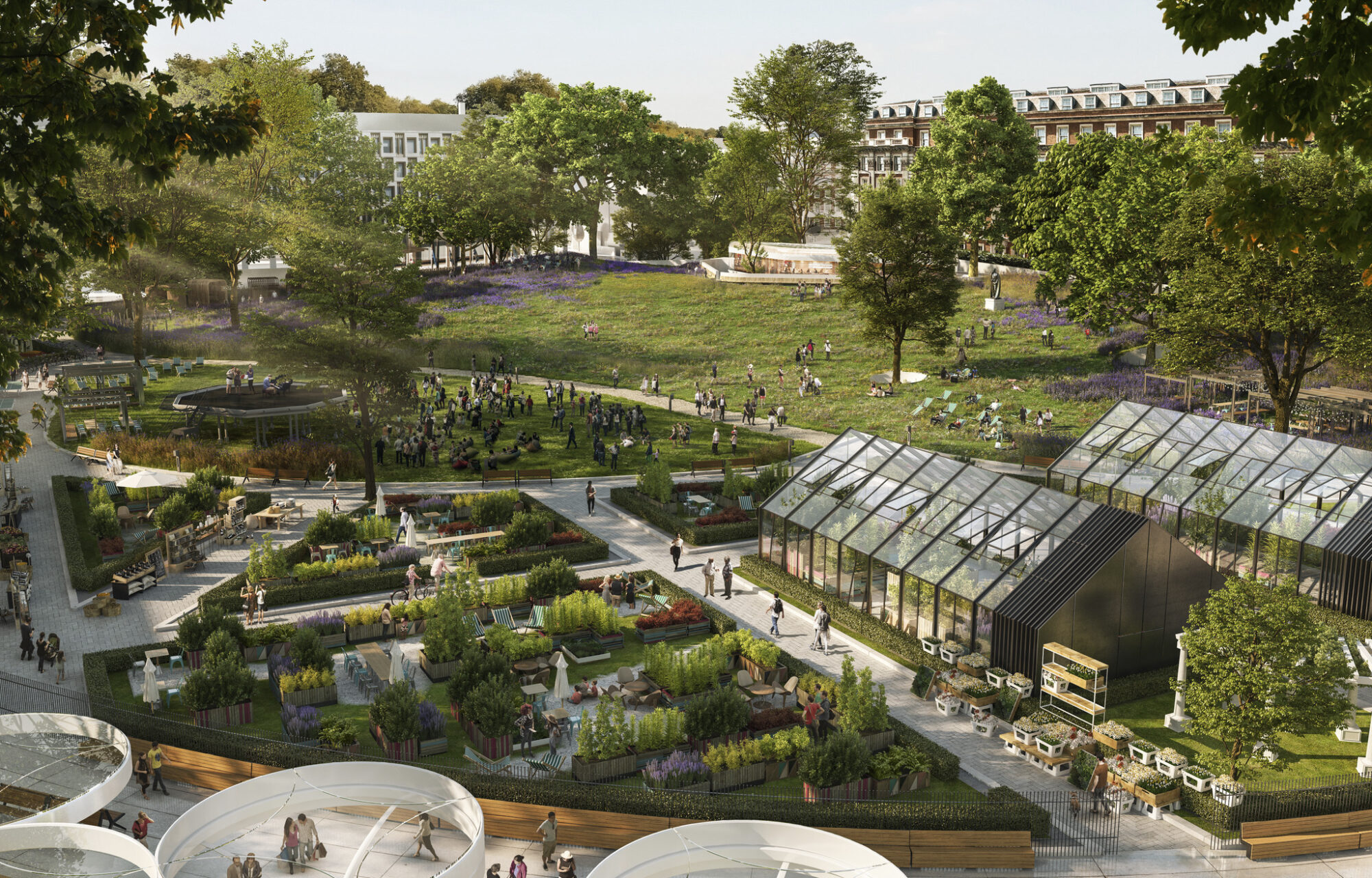
Confidential competition entry in London, UK
6. Agriculture
Food and farming offer an important connection to the landscape. Consider how and why foods are grown and used locally, and this becomes a meaningful – and marketable – part of the hotel or resort’s story. We are currently researching how much space a resort farm requires in order to grow enough food to satisfy most (if not all) of the property’s F&B service, but even urban boutique hotels can have a huge impact. Culinary gardens require very little space and can range from interior herb walls, rooftop beehives and terrace cocktail gardens all the way to full-scale organic farms at larger resorts. Properties can also partner with neighboring agricultural providers when their own space is limited, while reserving on-site space for events, artisan and farmers markets, farm dinners and more help to monetize the landscape.
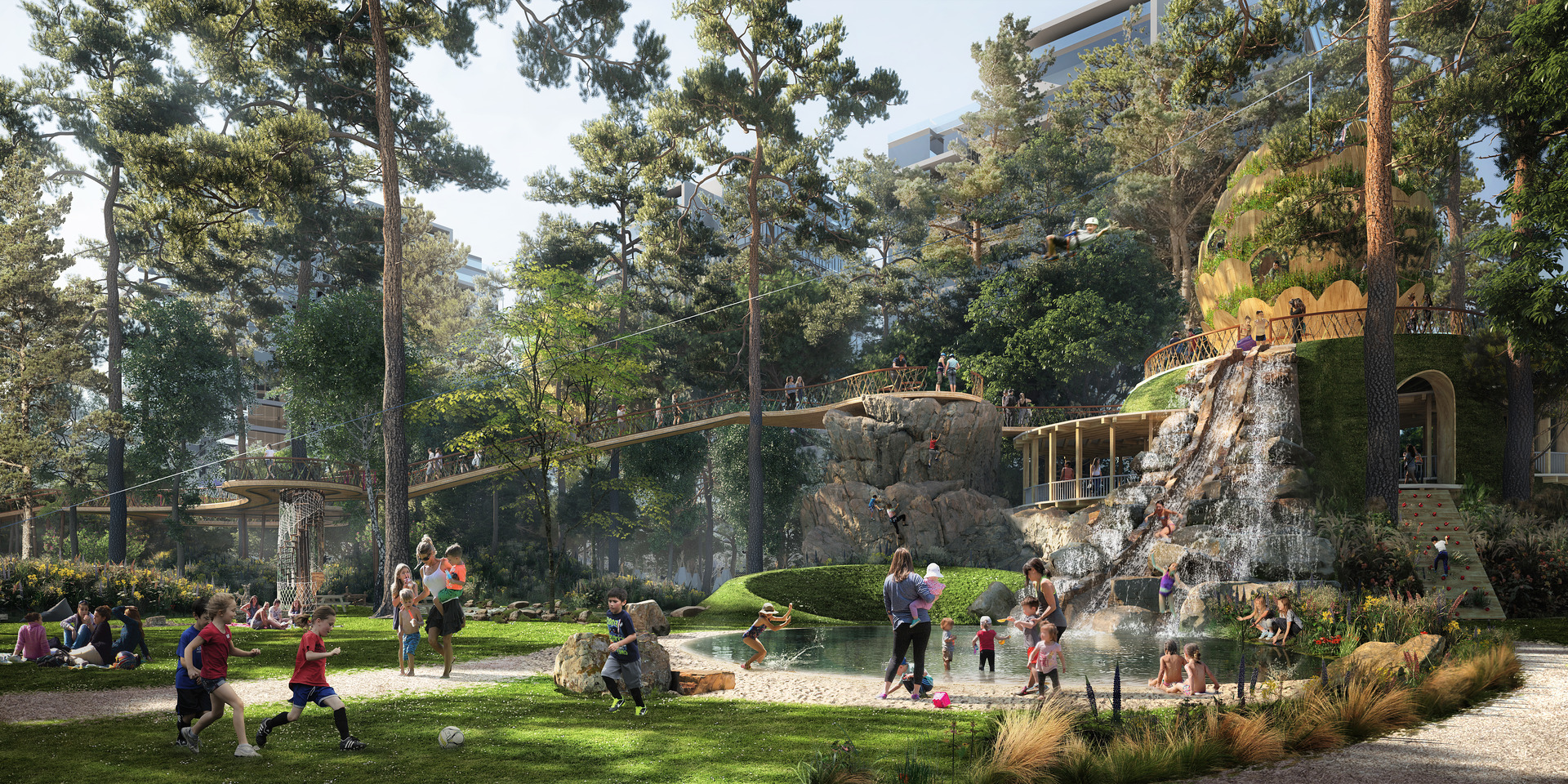
Confidential urban project in Turkey
7. Programs for Kids
Offering family-friendly amenities is another way to enhance a hotel or resort’s revenue potential. Outdoor spaces for children’s wellness, including healthy and fun fitness programs, spa treatments, nature play or other outdoor exploration, can set the stage for kids’ long-term love of nature.
At any scale, and at every age, guests can enjoy unique and immersive experiences with nature and form bonds that keep them coming back for more. For example, a program where guests are invited to plant seeds in the resort’s garden or farm, encourages them to return the following season to see (or even eat) the physical results of their efforts.
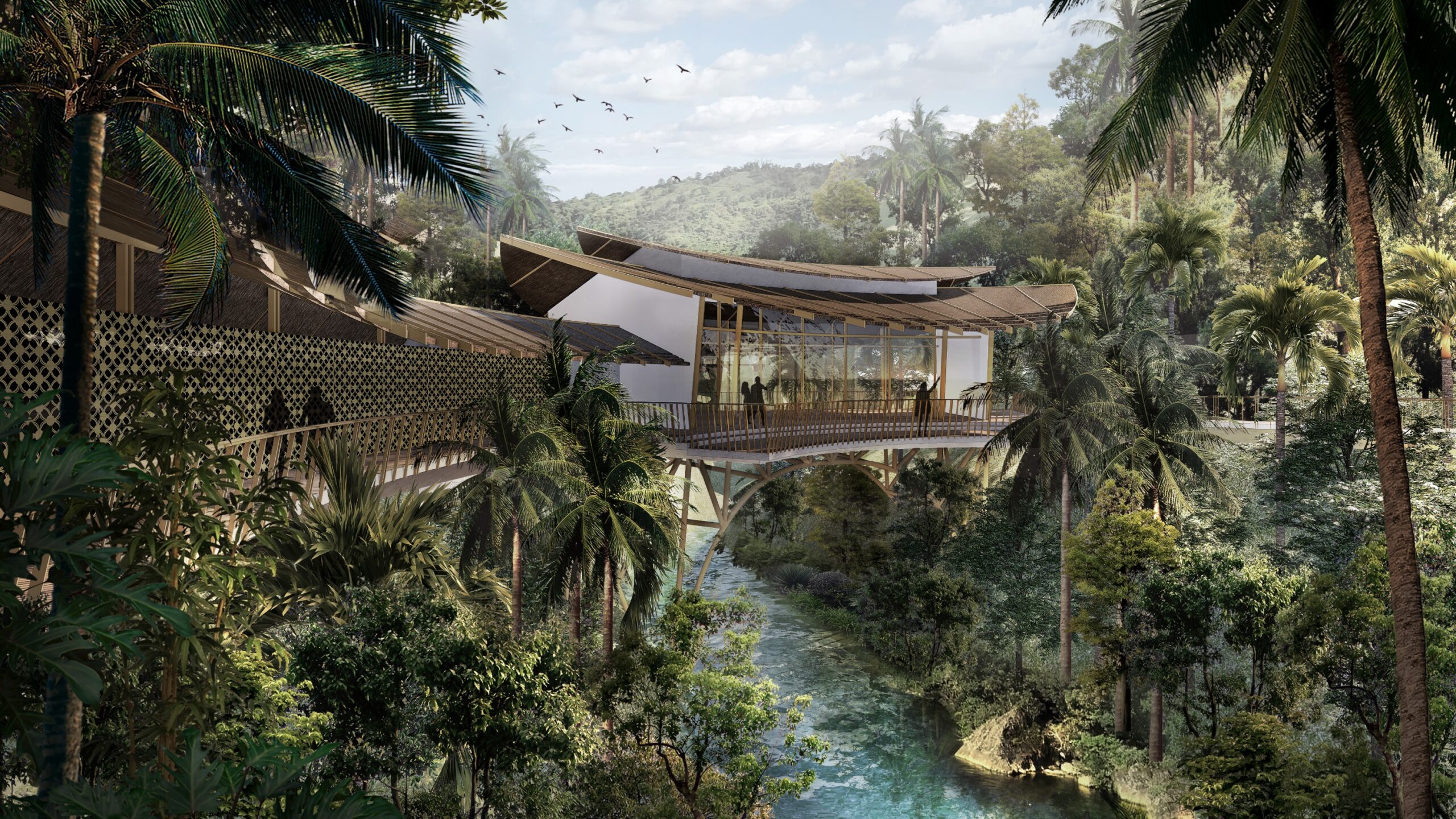
Banyan Tree at Hann Lux Lifestyle Resort in New Clark City, the Philippines
Landscape needs to be part of the strategy and design from the start. Showing a client images of wellness programs like those described here will quickly illuminate opportunities to enrich the guest experience and monetize a hotel or resort’s landscape. Consider that most operators and managers will also be locals, so the stories of a region’s ecology are their own stories too, and they’ll be motivated to help tell them.
Landscape has always been about wellness and sustainability and yet is now, finally, being recognized for the substantial impact it can have on a hotel or resort’s profitability. Landscape is an asset and an amenity – a critical component in the carefully orchestrated guest experience.

About the author
Ashley Scott is a Master Planner and Landscape Architect with more than twenty-five years of experience in design management and thought leadership. His portfolio of work represents a wide range of resort project types and scales, and spans Europe, the Middle East, Asia and Latin America. Prior to joining WATG in late 2019, Ashley was the Global Lead for the Resort Master Planning and Landscape Architecture sector of AECOM, where he managed a cohesive and experienced team of over seventy-five Master Planners and Landscape Architects in London and across the UK.
Latest Insights
Perspectives, trends, news.
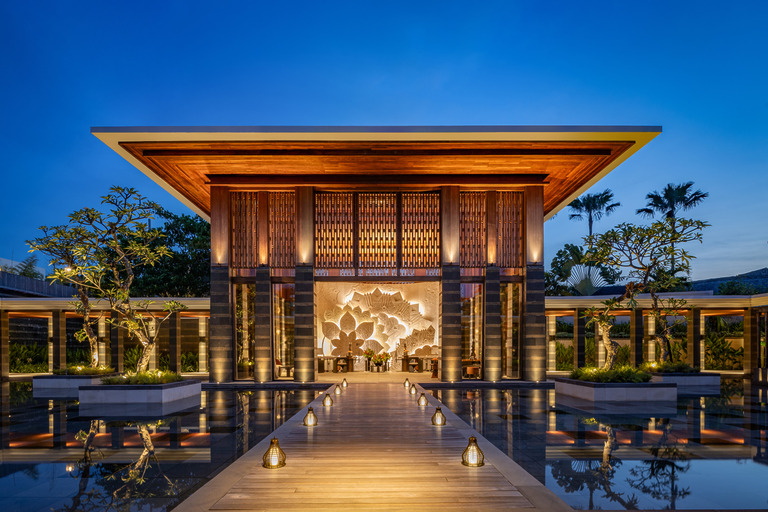
- News
2025: A Year in Review
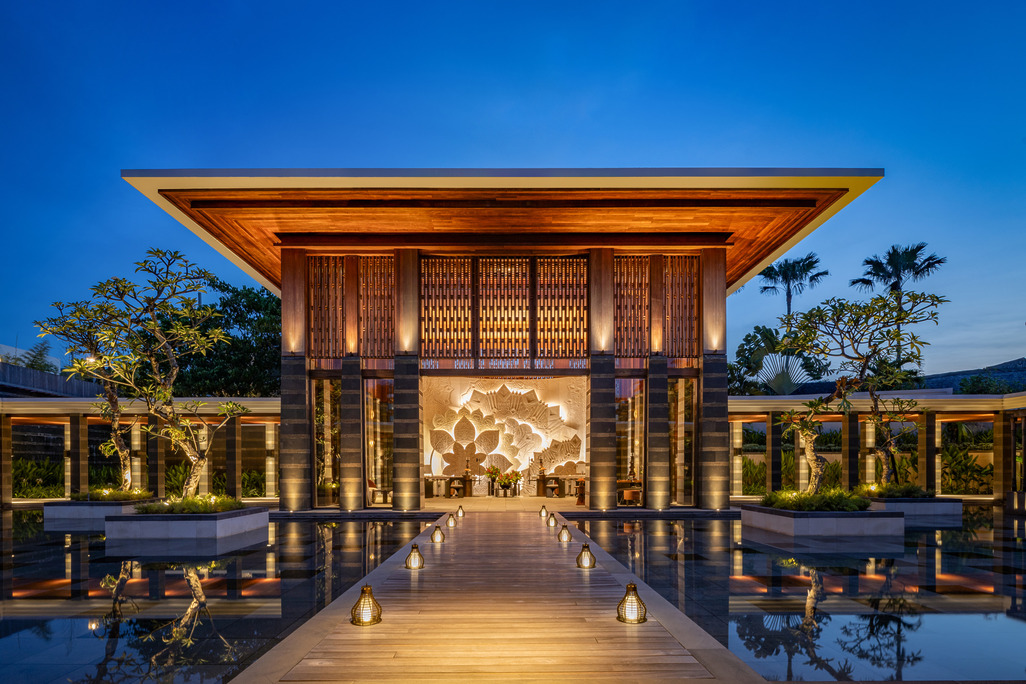
- News
2025: A Year in Review

- Strategy & Research |
- Design Thinking & Innovation
The Architect of the Future

- Strategy & Research |
- Design Thinking & Innovation
The Architect of the Future

- News
WATG Leads Landmark Initiative to Shape the Future of the Giza Pyramids

- News
WATG Leads Landmark Initiative to Shape the Future of the Giza Pyramids
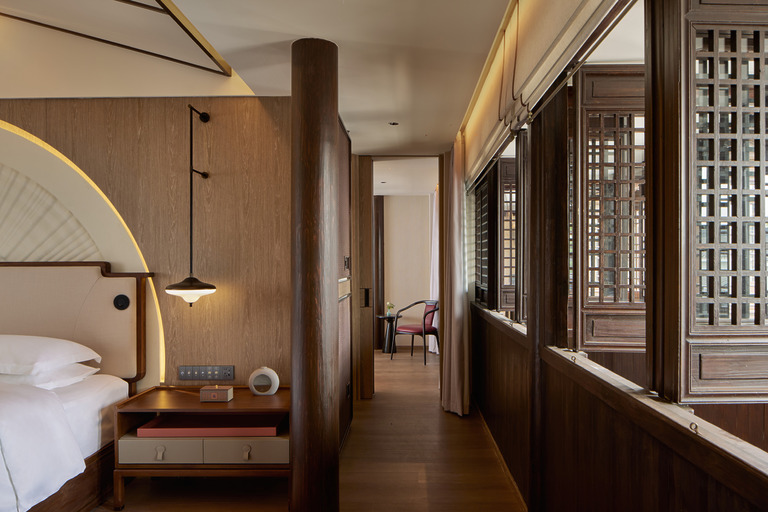
- Trends
Interior Design Trends 2026: Authenticity, resonance, and resilience.
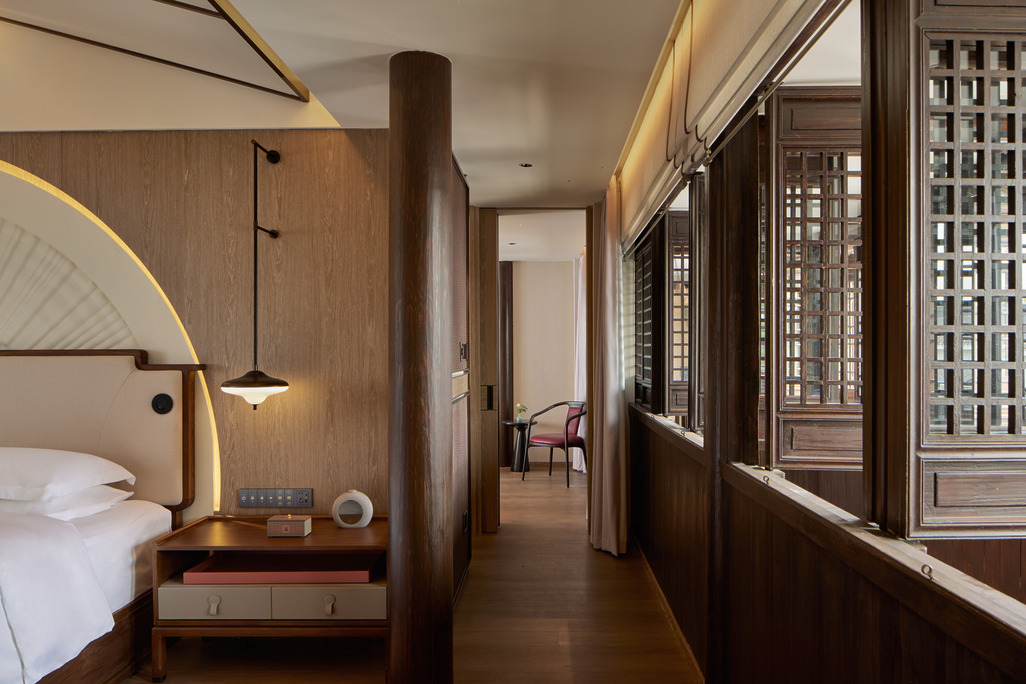
- Trends
